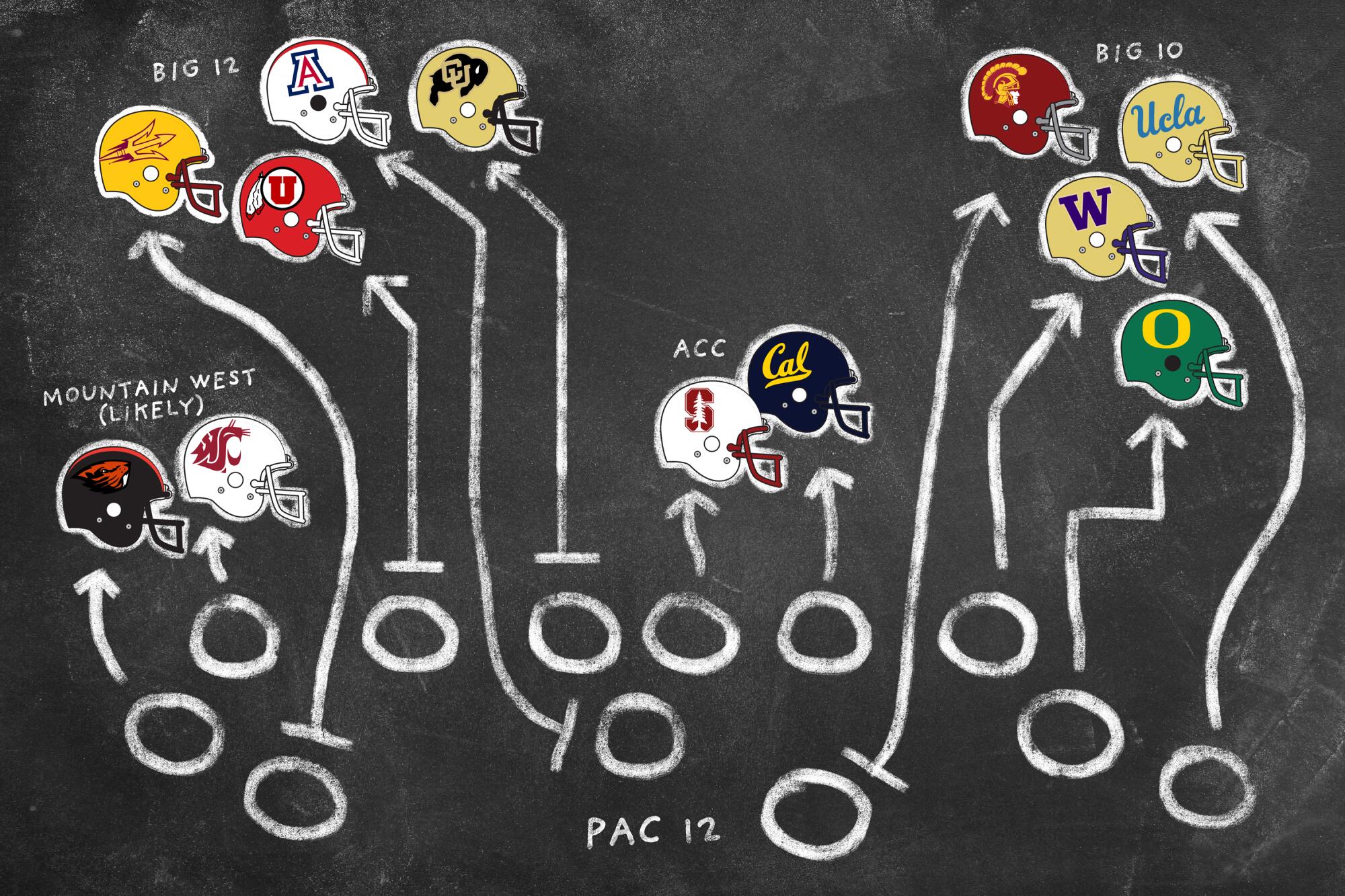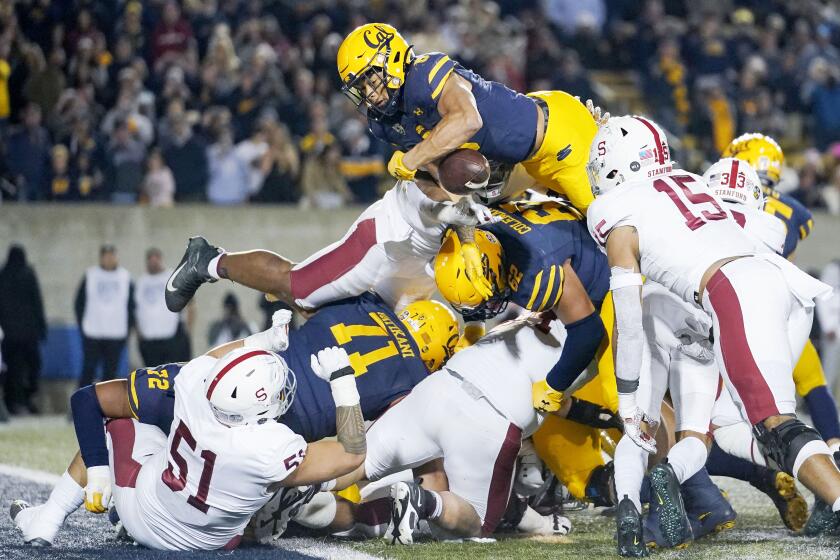
- Share via
It was the early days of college football’s great shake-up, with schools jumping from one conference to another, everyone looking for more money. The Pac-12 had a chance to not just survive, but thrive.
Conference officials fielded interest in absorbing eight teams from the rival Big 12. They could have become a behemoth, a powerhouse, the Pac-20.
The deal never materialized and now, a few years later, the Pac-12 — known to sports fans as the “Conference of Champions” — has died. It was 108.
Authorities have confirmed the cause of death as massive hemorrhaging, with 10 member schools announcing plans to depart in 2024.
Thursday was the final nail in the coffin, with California and Stanford heading for the door, agreeing to join the Atlantic Coast Conference. The Pac-12 is now survived by Oregon State and Washington State, the only schools that will be left after this year.
That makes this new football season — normally a time of hope and optimism — more closely resemble a four-month-long memorial service, with fans slowly filing past the open casket, paying their respects.
Stanford and Cal have found new homes in the Atlantic Coast Conference, leaving just Washington State and Oregon State behind in the Pac-12.
“To think even remotely, five years ago, the Pac-12 would be in this position,” Washington State football coach Jake Dickert said, “it’s unthinkable to think that we’re here today.”
The Pac-12 was born in 1915 when officials from four West Coast colleges met at the Imperial Hotel in Portland to form what they called the Pacific Coast Conference. By 1950, membership had grown to 10.
A “pay-for-play” scandal at USC, UCLA, California and Washington forced the PCC to disband in 1959, but it promptly reformed and, by 1968, had rebranded itself as the “Pacific-8.”
In the decades that followed, the conference continued to grow in both prominence and size, thereby requiring further name changes.
Its reputation was burnished by the success of USC football and UCLA basketball, programs that won a string of national championships. A deal to partner with the Big Ten for the annual Rose Bowl game on New Year’s Day helped boost a national audience.
At the same time, universities such as Cal and Stanford contributed to a growing reputation for excellence in Olympic sports such as swimming, volleyball and water polo.
At the most recent Summer Games in Tokyo, Pac-12 athletes, coaches and alumni accounted for 60 individual and team medals, which would have ranked the conference fifth, just behind England, among all nations in the overall medal count.
But even as it excelled in competition, the Pac-12 lagged farther and farther behind rivals such as the Southeastern Conference when it came to attracting media rights fees, which had become the lifeblood of college sports.
How did the Pac-12 die? These surprising decisions by USC, Oregon, Washington and others thwarted efforts to save the conference.
The decision to form its own cable network, which never quite took hold, and to resist that Big 12 overture ultimately proved fatal.
The Pac-12 showed its first outward symptoms of decline in the summer of 2022 when USC and UCLA announced they would join the Big Ten.
“While we are extremely surprised and disappointed by the news coming out of UCLA and USC today, we have a long and storied history in athletics, academics, and leadership in supporting student-athletes that we’re confident will continue to thrive and grow into the future,” conference officials said in a news release at the time.
But further struggles with a TV deal this summer prompted Oregon and Washington to join in the Big Ten exodus. Arizona, Arizona State, Colorado and Utah agreed to shift to the Big 12.
After Cal and Stanford made their move this week, announcing a 2024 shift to the Atlantic Coast Conference, all hope for survival was lost. So were, perhaps, two traditional rivalries: The “Apple Cup” between the Washington schools and the annual matchup — formerly known as the “Civil War” — between the Oregon schools.
“Jumping from a conference was never the first option,” an Oregon State administrator mused to the Associated Press. “Making the conference work is always where my heart and my mind lay.”
More to Read
Go beyond the scoreboard
Get the latest on L.A.'s teams in the daily Sports Report newsletter.
You may occasionally receive promotional content from the Los Angeles Times.













